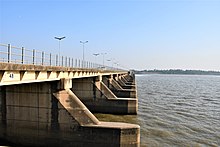Pakistan has yet to receive official communication from India regarding the resumption of talks on the Indus Water Treaty (IWT), which India suspended unilaterally on April 23, 2025.
This move followed the Pahalgam incident, which resulted in the deaths of 26 tourists in Indian-occupied Jammu and Kashmir (IOJ&K).
Authorities in Islamabad have reported fluctuations in water inflows from IOJ&K, particularly at the Marala headworks on the Chenab River, where variations of 8–10% are being recorded with no consistent pattern.
Pakistan’s concern regarding the IWT is compounded by ongoing military tensions, although a ceasefire agreement is in place. The Director Generals of Military Operations (DGMOs) from both countries held talks via hotline on Monday evening, aimed at de-escalating tensions after the Pahalgam attack.
The Indus Water Treaty, brokered by the World Bank in 1960, governs the sharing of water between the two countries. Under the treaty, India controls the eastern rivers—Sutlej, Beas, and Ravi—while Pakistan is allocated water from the western rivers—Indus, Chenab, and Jhelum.
Over the years, Pakistan has raised objections to India’s hydroelectric projects on the Jhelum and Chenab rivers, bringing these matters before the International Court of Justice (ICJ) and the World Bank.
Legal experts in Pakistan maintain that India cannot unilaterally suspend the treaty, as the World Bank acts as its guarantor. However, there has been no indication from India regarding the resumption of talks.
Pakistan’s primary agenda for any future discussions would include the restoration of the Indus Water Treaty, the Kashmir issue, and India’s alleged support for anti-Pakistan elements in Balochistan and Khyber Pakhtunkhwa. Despite ongoing security concerns, the countries have maintained a fragile ceasefire, facilitated through international diplomatic efforts.
On the water front, while water continues to flow from IOJ&K into Pakistan, noticeable fluctuations have been observed, particularly in the Chenab River at Marala. A senior Pakistani official stated that there have been variations of up to 10 percent in water inflows at Marala. The capacity at Marala is about 0.8 to 0.9 million cusecs, but recent inflows have ranged between 25,000 and 33,000 cusecs.
Recent data on water flows from key areas also reflect fluctuations. In Tarbela, the inflows were 118,900 cusecs, with outflows at 82,000 cusecs. In Nowshera, the Kabul River recorded inflows and outflows of 40,600 cusecs, while Khairabad Bridge saw 157,600 cusecs flowing in and out.
The Jhelum River at Mangla showed 44,700 cusecs in inflows and 28,000 cusecs outflows. The Chenab at Marala saw inflows of 29,400 cusecs, with outflows at 10,000 cusecs. No variations have been recorded in the Neelum River, where water is currently stored in the Mangla reservoir.























